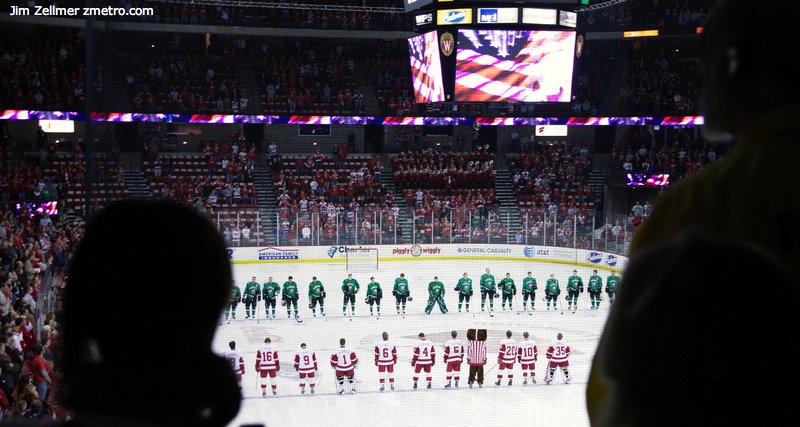So as readers of this site know, I represent Robert Greenwald (pro bono) in a some fair use matters. My first work was on his film Outfoxed. Robert has been continuing the campaign against Fox. His latest is a very clever set of attacks on the “indecency” of Fox News. (The purpose is to push the FCC to unbundle cable channels). Watch the video below and you’ll see the point.
NY Taxis and GPS Receivers
Interesting video clip on GPS receivers and New York City Taxis. The conversations were fascinating. The TomTom 910 GPS receiver was quite useful this summer (just replaced by the 920). The iPHone
Asian Artists Paint the Color Of Money
Throughout Asia’s developing nations, once penniless painters are getting used to this most unexpected emotion. The region’s contemporary-art market has never been so hot. Last year, a collection of dreamlike portraits and landscapes by China’s Zhang Xiaogang raked in just over $24 million — more than British enfant terrible Damien Hirst made in 2006. In March, a sale of modern Indian art in New York City raised a record $15 million, including just under $800,000 for Captives, a stark evocation of desiccated torsos by New Delhi–born Rameshwar Broota. Two months later, an auction in London elicited $1.42 million for a Tantric-inspired oil painting by India’s Syed Haider Raza. Even in Vietnam, idyllic rural scenes coated in the country’s distinctive lacquer that sold for a few hundred dollars a few years ago are now selling for 10 times that. A gouache-and-ink painting by Vietnamese post-impressionist Le Pho, whose work is part of the permanent exhibition at the Modern Art Museum in Paris, captured nearly $250,000 at a Singapore sale. Overall, leading auction houses Sotheby’s and Christie’s auctioned $190 million in contemporary Asian art last year, compared to $22 million just two years before. “This is just the beginning,” says Swiss art dealer Pierre Huber, who in September oversaw a debut contemporary Asian art fair in Shanghai. “For so long, people did not know about Asian art. But now the world is turning to Asia, and what they see is amazing.”
Flying the Ultra No-Frills Airline
Passengers departing on Skybus Airlines from Columbus, Ohio, walk out of a brand new terminal and traipse across the tarmac to board their planes. In some cities, travelers fetch their own luggage off luggage carts. The airline has no telephone number that customers can call.
With fares starting at $10 one-way, do you expect more?
Skybus Airlines Inc., now six months old, brings a new level of bare-bones service — and very affordable prices — to the U.S. skies. The carrier also raises the question of just how cheap U.S. travelers will go to travel. So far, many seem to be willing to go very cheap. At a time when bus companies and Amtrak struggle to attract customers, and many travelers still gripe about the loss of in-flight meals and the addition of so many airline fees, Skybus filled more than 80% of its seats all summer.
Putting the Past to Work
IN AN AGE OF INFORMATION OVERLOAD, identifying the most useful information in a timely fashion isn’t easy — and it may be some comfort to know it never was. Yet by studying the adaptive skills of earlier captains of commerce, entrepreneurs in even the most cutthroat businesses can learn how to smack down the competition.
The key: Embrace invention — even that of your competitors — and use it better and faster than they do.
In the 1870s, John D. Rockefeller had a telegraph line run to his Euclid Avenue home in Cleveland. When he came home for lunch, he could stay in touch with his Oil City, Pa., contacts for updates on gushers and dry holes. He could then telegraph his brother in New York to adjust the price of kerosene for the European market, and his brother could pass the price on to Europe by trans-Atlantic cable.
Although Standard Oil employed telegraphers, John D. Rockefeller sent and received his own “e-mails.” Sending and receiving Morse code at commercial speeds were not easy skills to master, but Rockefeller was “computer-literate.” He had to be skilled in the current technology to have the best information and act on it.
The oil business of that day was not a fuel business. Standard Oil sold illumination. Tallow and whale-oil concerns were its competitors. Kerosene lamps, especially with mantles that burned white-hot, were a great advance in technology. Standard Oil produced a lamp-fuel kerosene of such purity that explosions were greatly reduced. Its five-gallon branded blue tins became known around the world. (Meanwhile, the byproduct of kerosene distillation, gasoline, was discarded as a nuisance.)
Pomp, Circumstance & Hockey: Wisconsin Badgers vs. North Dakota Fighting Sioux


 Details of the Badgers 4-0 win available here. North Dakota had an amazing 43 shots on goal, including 25 in the third period. A tremendous, fast paced game. One of the best I’ve seen.
Details of the Badgers 4-0 win available here. North Dakota had an amazing 43 shots on goal, including 25 in the third period. A tremendous, fast paced game. One of the best I’ve seen.
A Provocative Photo
Gorbachev, The Berlin Wall and Louis Vuitton.
More here.
Dave Stark’s 3rd Quarter Real Estate Market Newsletter
Dave Stark: [432K PDF]
My, my, this was certainly an interesting quarter of activity in the South Central Wisconsin real estate market! For a while there, it was looking like we might start to see an uptick in activity compared with the 3rd quarter of 2006. In fact, note that single family home sales for the third quarter in the combined Dane, Sauk, and Columbia markets are off only 1% from the same quarter of 2006. For the year, they’re off only 3%. Condo sales are off a little more, falling 14% for the quarter and 11% for the year. As we said in our last edition, the market appeared to have settled into a groove, down roughly 10-12% from the unrealisticallyfrantic 2005 pace.
And then, in mid August, the Great Sub-Prime Fiasco hit the national media like a nuclear bomb, and things changed dramatically. Within the third quarter numbers, reported closings in September are off nearly 24% from last September (as of this writing*). That shows you just how drastically things changed in mid-stream. The sensational reports speculating that Countrywide might go bankrupt seemed to throw the market into a kind of paralysis, and buyers scuttled to the side lines again just when they seemed to be finding the courage to come back onto the field.
Unfortunately, as has been the case throughout this period, the perceptions the public is being left with range from overstated to just plain wrong. While the events of August were real, our experience is that most local home buyers and sellers don’t understand what it means for us. The media has done a very poor job of distinguishing between what’s going on nationally and what’s going on here locally. The impression many people have is that foreclosures are skyrocketing, foreclosed homes are flooding the market, driving up inventories, lenders are going out of business so that home loans are no longer available, interest rates on the few loans that are available are rising, and home prices are plummeting. None of these things are remotely true in our local market. But as the September closing numbers suggest, these perceptions do have an influence on people’s behavior in the short run. Yes, something is going on, but what is it, really?
Dave Stark is a longtime friend and client. www.starkhomes.com
Former Technician ‘Turning In’ AT&T Over NSA Program
His first inkling that something was amiss came in summer 2002 when he opened the door to admit a visitor from the National Security Agency to an office of AT&T in San Francisco.
“What the heck is the NSA doing here?” Mark Klein, a former AT&T technician, said he asked himself.
A year or so later, he stumbled upon documents that, he said, nearly caused him to fall out of his chair. The documents, he said, show that the NSA gained access to massive amounts of e-mail and search and other Internet records of more than a dozen global and regional telecommunications providers. AT&T allowed the agency to hook into its network at a facility in San Francisco and, according to Klein, many of the other telecom companies probably knew nothing about it.
Klein is in Washington this week to share his story in the hope that it will persuade lawmakers not to grant legal immunity to telecommunications firms that helped the government in its anti-terrorism efforts.
Perhaps our elected officials might consider this matter vis a vis AT&T’s flawed video “competition” bill. unlikely
Is It the New Automotive Century Yet?
Finally, we are being treated to a good old-fashioned bare-knuckles fistfight. The biggest and most respected players in the automobile industry are trashing each other’s technological plans for future automobiles, while promoting their own concepts as the future of the industry. It’s an elevated debate, not a product-vs.-product dustup. What I found most fascinating about all of this was Carlos Ghosn’s position that, one day in the near future, only electric cars might be allowed in some of the most congested cities in the world. There’s little doubt in my mind that he’s probably right; he’s just looking at the European viewpoint on that issue, not necessarily the Japanese.